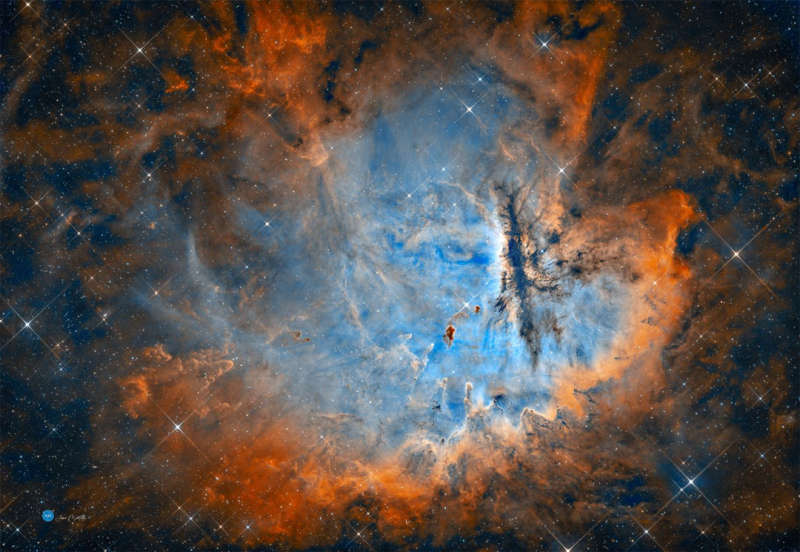Credit & Copyright: Juan Montilla
(AAE)
Explanation:
You'd think the Pacman Nebula would be eating stars, but actually it is forming them.
Within
the nebula, a cluster's young, massive stars are powering
the pervasive nebular glow.
The eye-catching shapes looming in the featured
portrait of NGC 281 are sculpted dusty columns and dense
Bok globules
seen in silhouette, eroded by intense, energetic winds and
radiation
from the hot cluster stars.
If they survive long enough, the
dusty structures could also be sites of future star formation.
Playfully called the
Pacman Nebula because of its overall shape,
NGC 281 is about 10,000 light-years away in the constellation
Cassiopeia.
This sharp composite image was
made through
narrow-band filters in
Spain in mid 2024.
It combines emissions from the nebula's hydrogen
and oxygen atoms to
synthesize red, green, and blue colors.
The scene spans well over 80
light-years at the estimated distance of
NGC 281.
1999 2000 2001 2002 2003 2004 2005 2006 2007 2008 2009 2010 2011 2012 2013 2014 2015 2016 2017 2018 2019 2020 2021 2022 2023 2024 2025 |
Yanvar' Fevral' Mart Aprel' Mai Iyun' Iyul' Avgust Sentyabr' Oktyabr' Noyabr' Dekabr' |
NASA Web Site Statements, Warnings, and Disclaimers
NASA Official: Jay Norris. Specific rights apply.
A service of: LHEA at NASA / GSFC
& Michigan Tech. U.
|
Publikacii s klyuchevymi slovami:
NGC 281 - star formation - zvezdoobrazovanie
Publikacii so slovami: NGC 281 - star formation - zvezdoobrazovanie | |
Sm. takzhe:
Vse publikacii na tu zhe temu >> | |
